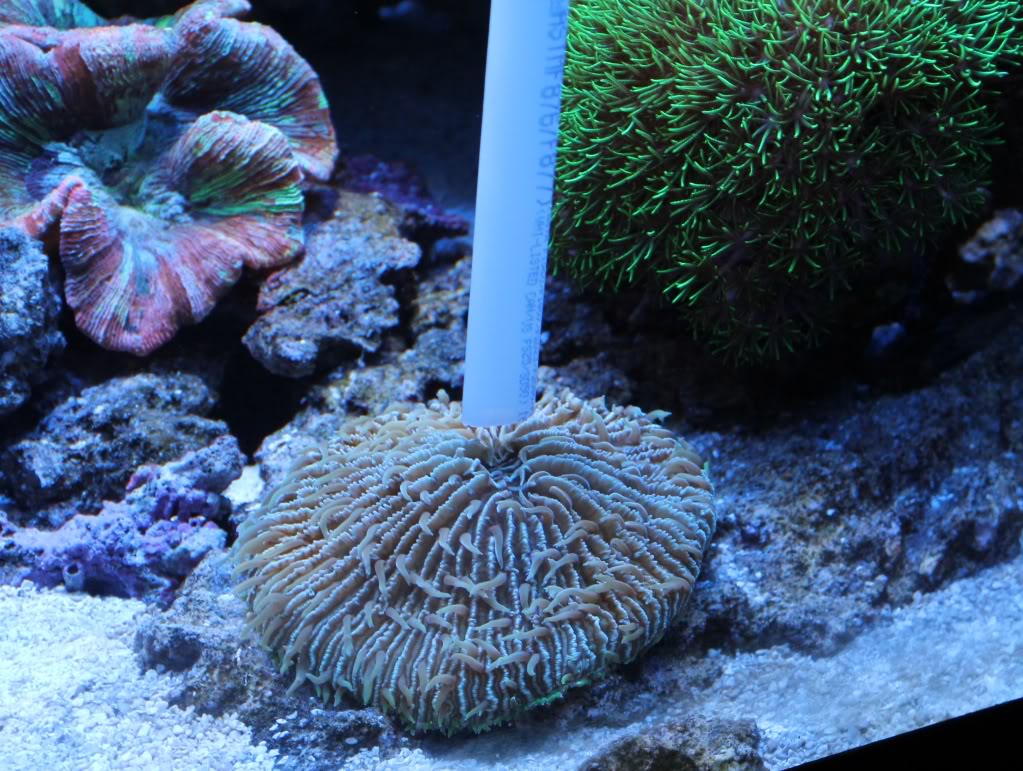
Feeding Corals
Corals (with a few exceptions) will do very well without being feed when provided with the proper environment within a mature set-up. Feeding corals will often accelerate their growth. When it comes to feeding, I will place corals into one of two groups, those with large mouths (large polyp corals like brains or plates), and those with very very small mouths (like stony polyp corals). I have a different approach to feed each.
When it comes to feeding corals with very very small mouths, like leathers or SPS corals, there are food additives you can add to the water or spot feed as I had explained in the article here on how to spot feed clams (link at the end of this article). That approach might be a better alternative (when/if you can use it) to dosing the whole tank. When dosing the whole tank, I will use these additives a few minutes before lights out and turn the skimmer off for the night giving the corals a longer period of time to be able to take in the food from the water. I have found once or twice a week feedings work best. Below are inks of the products that I use. Although these product are made for corals with very small mouths, all corals as well as filter feeders will also benefit from these products. You do have to be careful not to over dose these additives in your tank or it can affect your water quality
http://www.aquaticcommunity.com/review/showproduct.php?product=441&cat=500
http://www.aquaticcommunity.com/review/showproduct.php?product=482&cat=500
When it comes to feeding corals with large mouths, there are two options (other than the above mentioned) that seem to be the most popular and that have worked very well for me.
The first option is feeding meaty foods, like frozen mysis shrimp. The below pictures will show how I have fed meaty foods to my corals. This is among the more natural methods to feed corals with large mouths such as brains and plates. The only problem that I ever came across was that the rest of the fish and CUC in the tank really really like the meaty foods as well and can be relentless in trying to steal the food right out of the coral’s mouth. Also, these foods do not sink easy so you have to carefully place the food directly on the coral’s mouth with tweezers.
In an effort to provide a high quality food, I will soak the food in a marine fish food vitamin supplement.
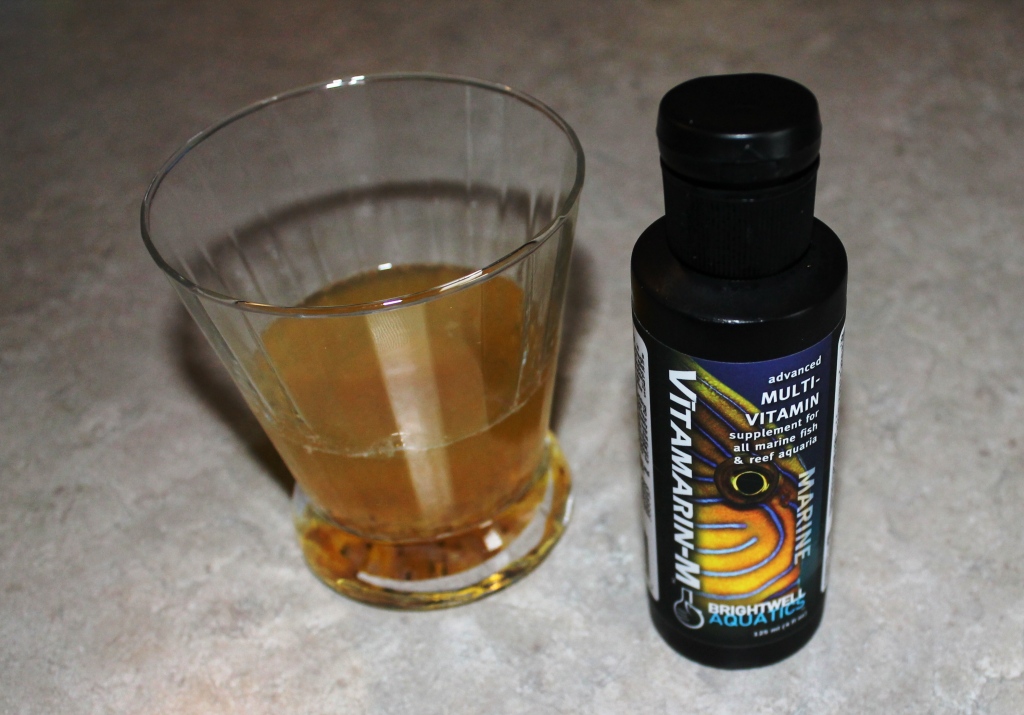
Once ready, I will use a pair of 12 inch tweezers to take the food and place it directly on the mouth of the coral. In this example of a brain coral, the mouths are were the color patterns meet at one spot in between the folds
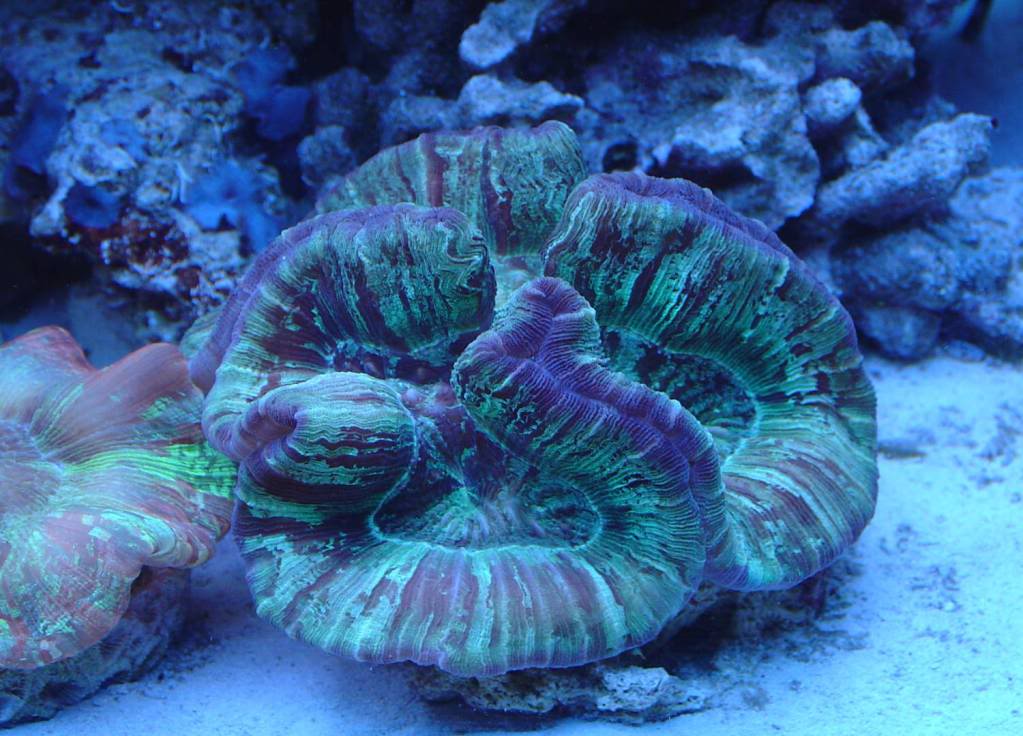
I usually don’t feed this much. I’m used to the tangs steeling some food by now so I feed a little extra so the coral is left with a few pcs. In the below picture, I had just placed the food on the mouth(s).
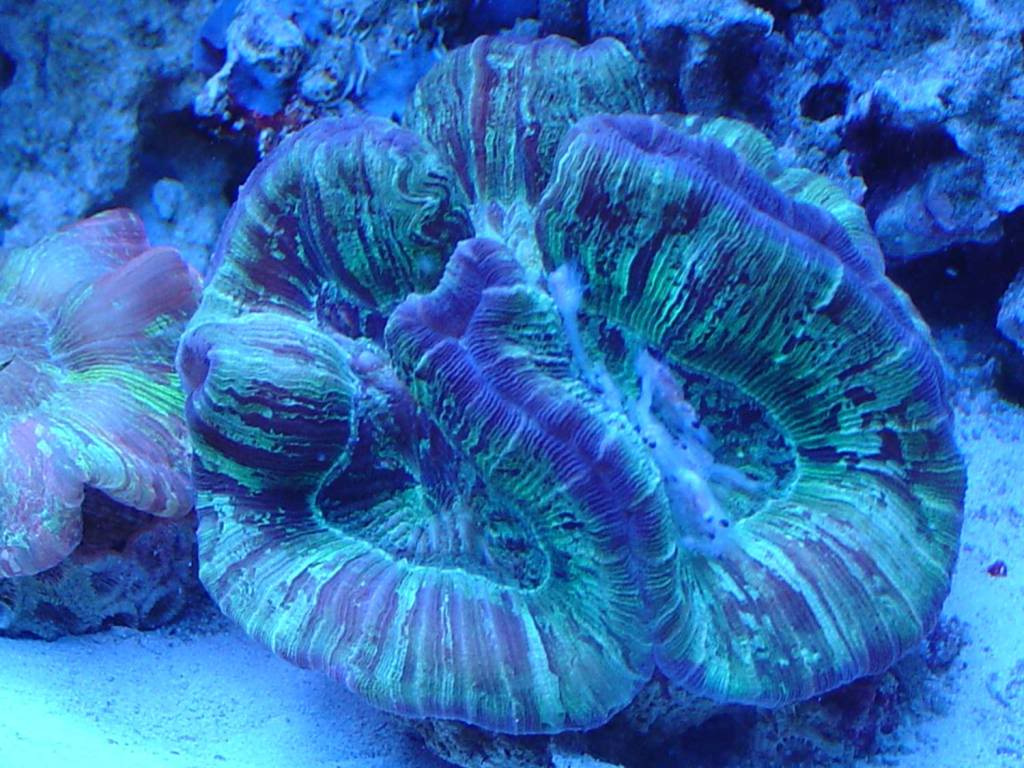
The brain will start moving it’s folds in towards the center where it’s mouths are, moving the food towards the mouth(s).
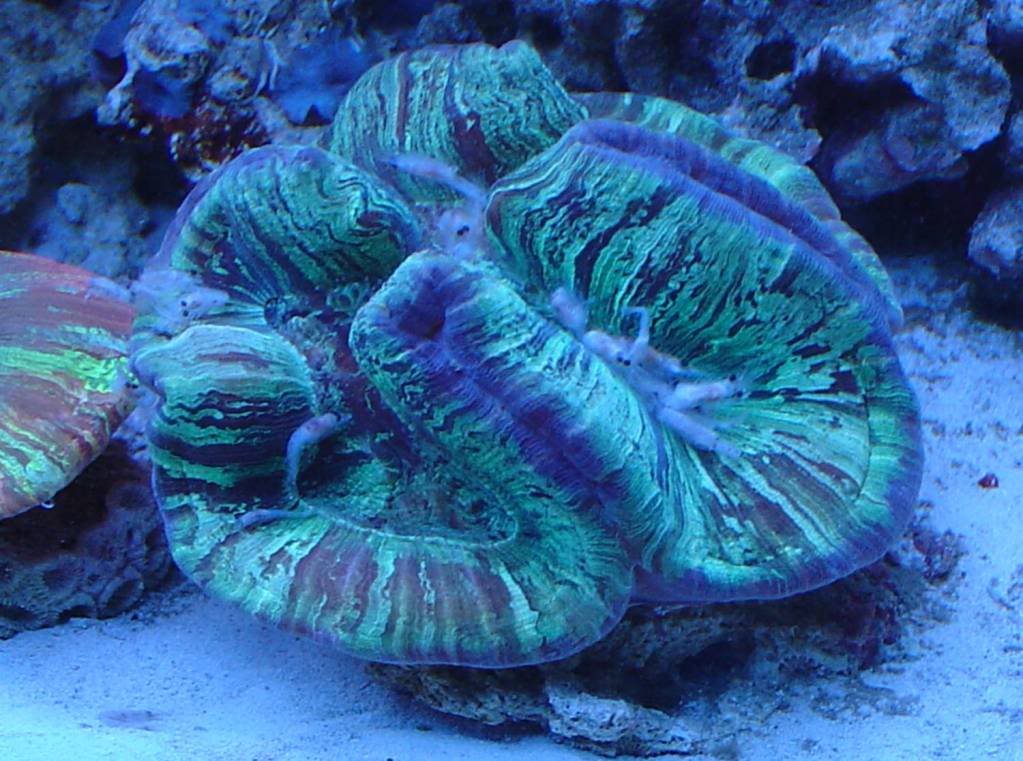
Once it has pushed the food near it’s mouths, the mouths will start opening up.
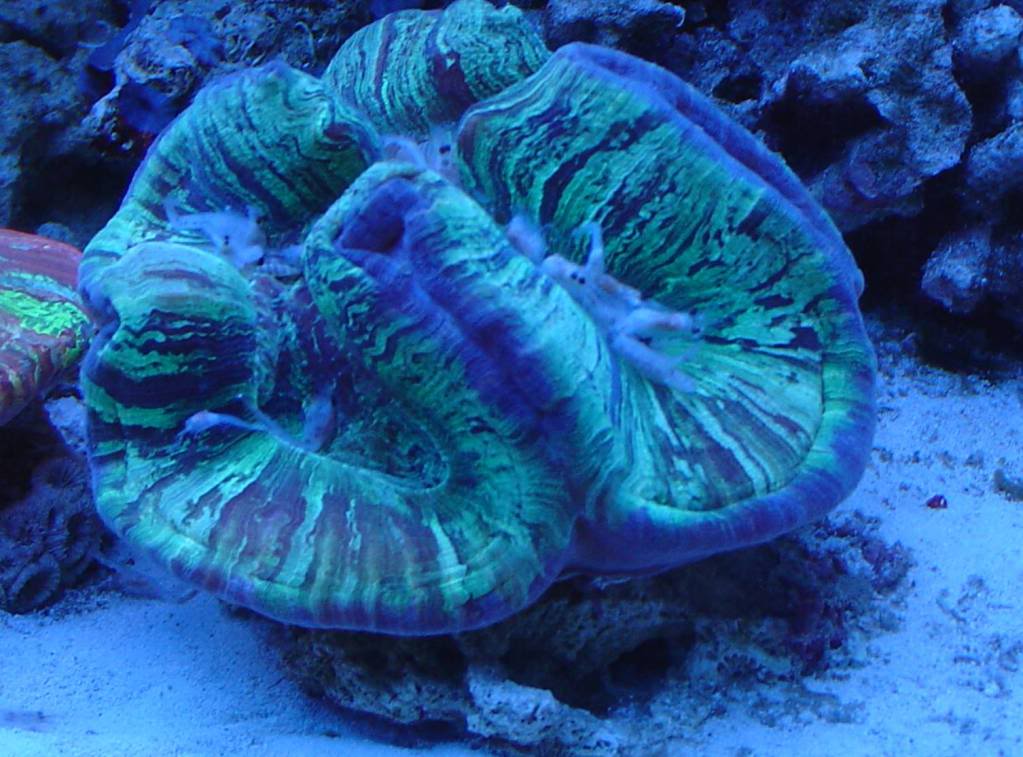
Next it will start to put the food into it’s mouths and continue to open the mouths even wider
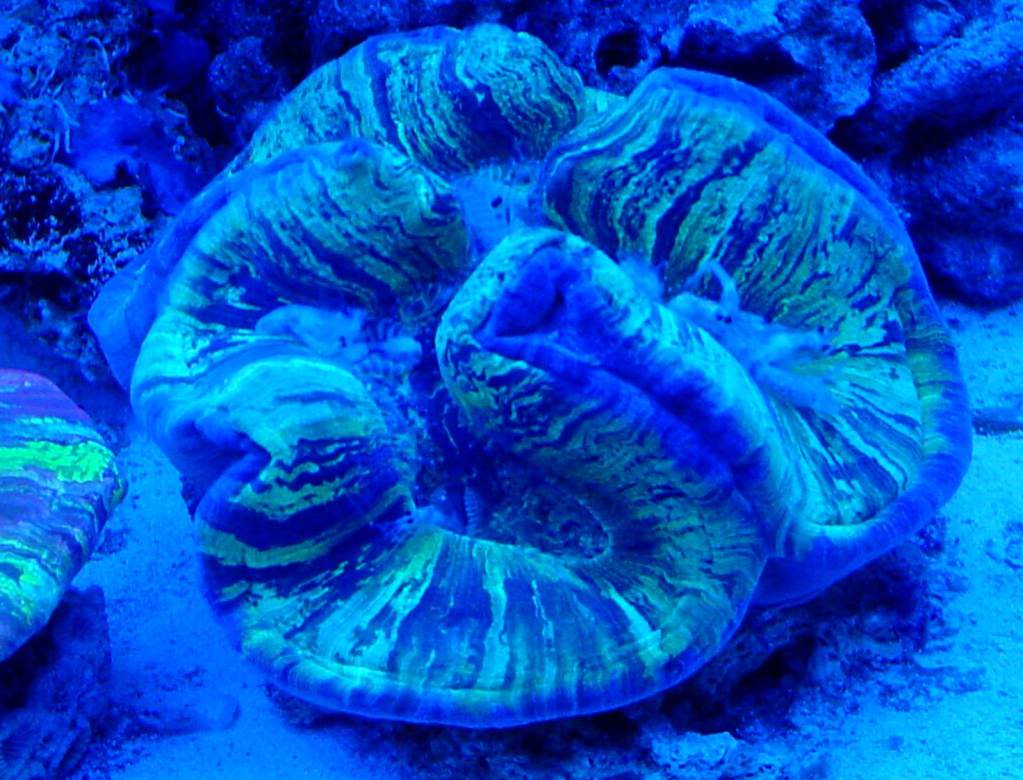
The mouths are fully open now as the coral continues to put the food into it’s mouths
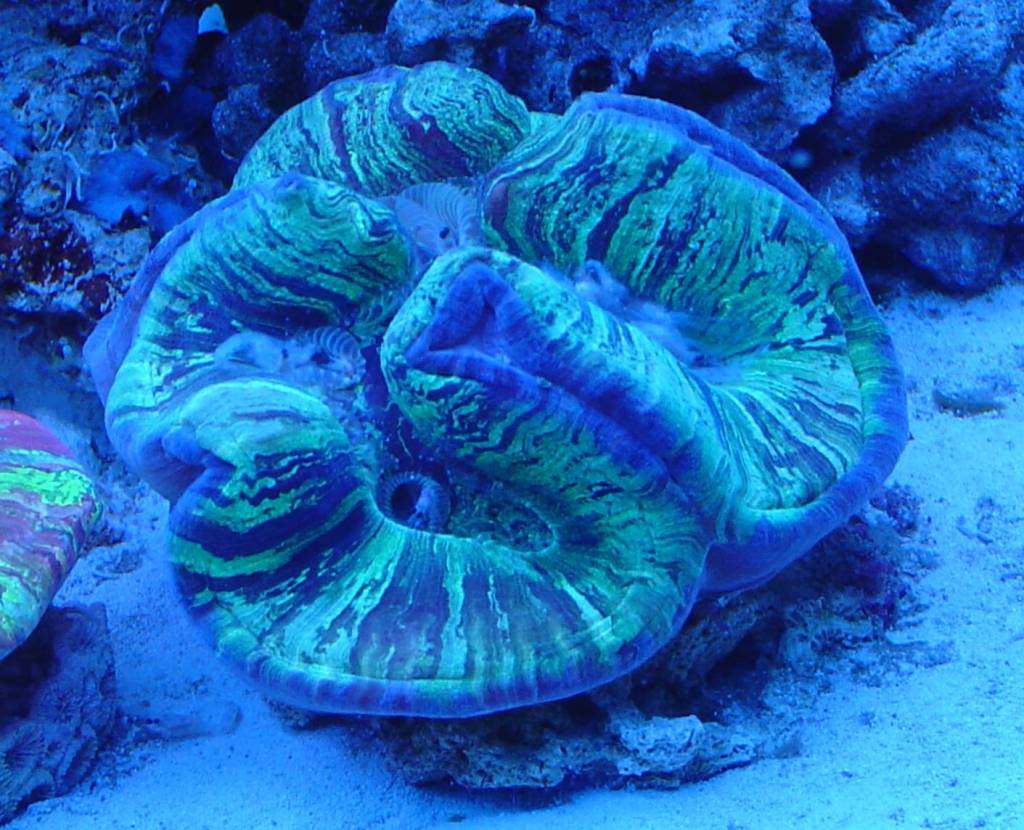
With the food inside its mouth now, it will start to close it’s mouth(s)
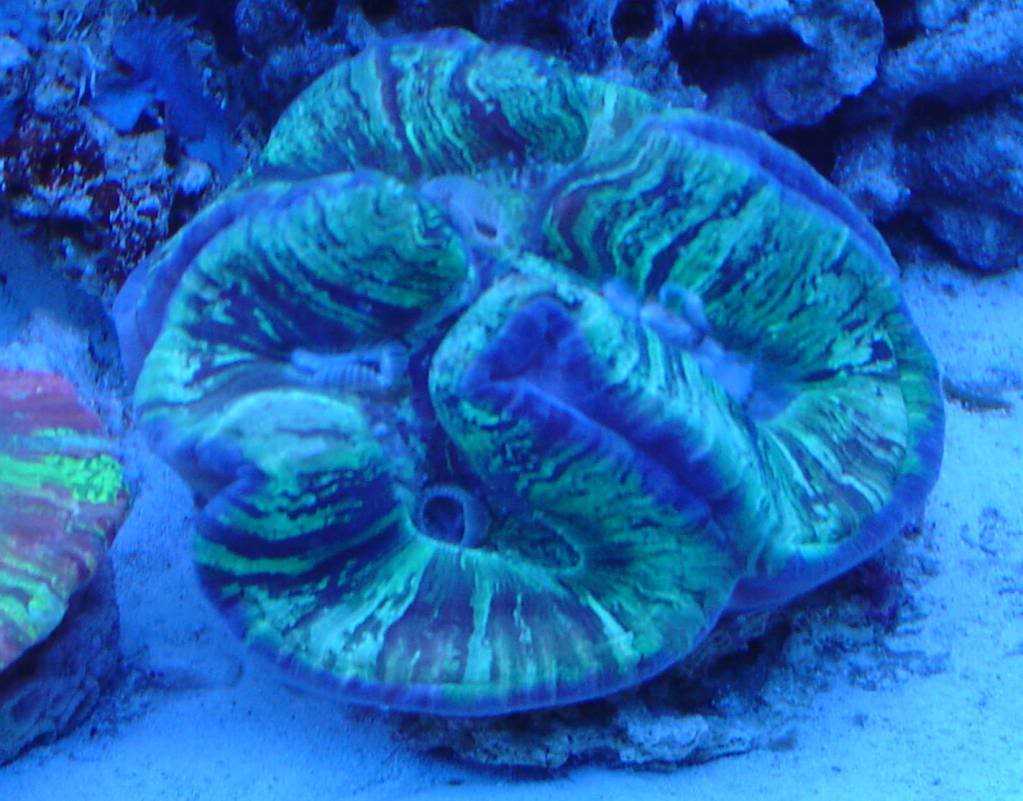
Mouths are now closed and feeding is done. There’s just one mouth that is a little slower than the rest. Total time was about 20 minutes.
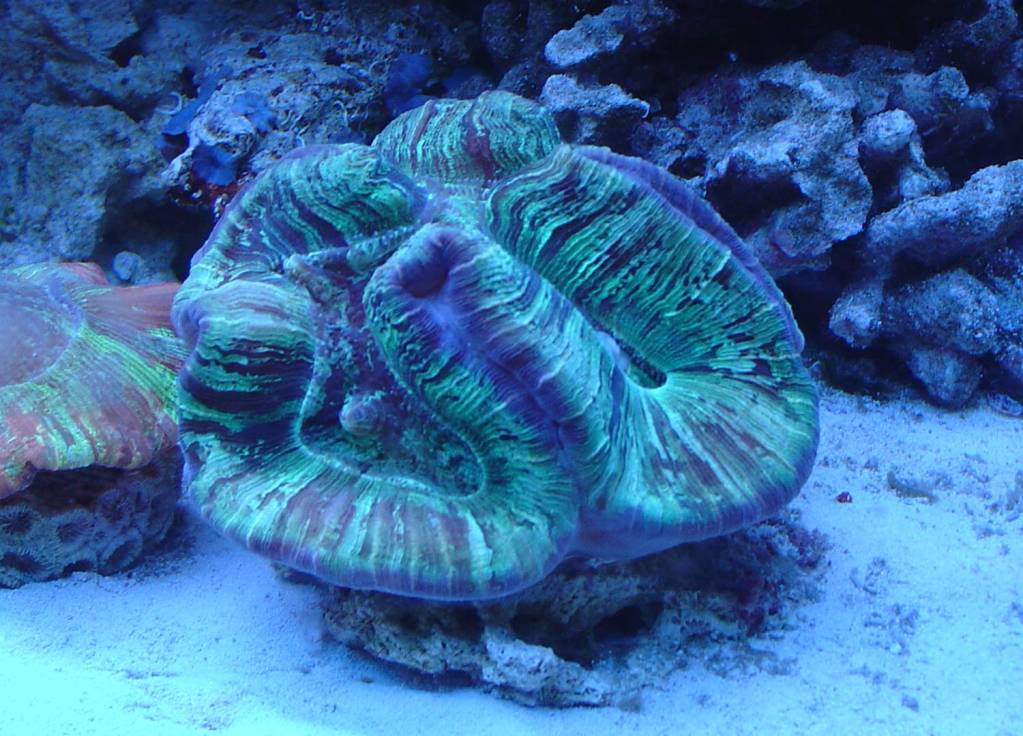
As with almost all forms of marine life, it is always best to offer a variety of different foods. I also feed my corals a good quality marine pellet food specifically made for corals. It is a lot easier to feed and the fish and CUC are not as nuts over it. As pellets can be harder for the coral to digest (as compared to meaty foods which are more natural), I will soak the pellets in the same food additives like the below to keep it soft and easier to digest.
http://www.aquaticcommunity.com/review/showproduct.php?product=479&cat=500
I will start by making sure I can see the coral’s mouth. On a plate coral that is usually very easy as its mouth is usually centered on the top.
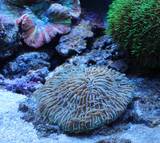
I will take a length of ½ inch plastic pipe cut to length so when it is placed on the substrate it will still be at least a few inches above the water in the tank.
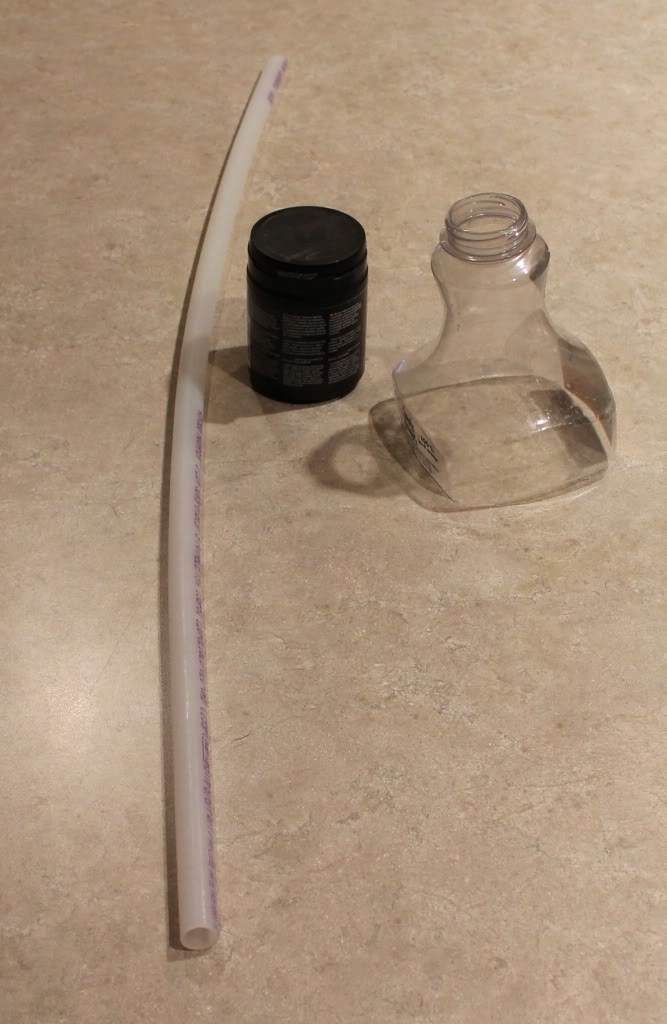
Once the coral food has been soaking in the liquid vitamin supplement for around 15 to 20 minutes, it is ready to feed. I will take the plastic pipe and lower one end in the tank just above the coral’s mouth. I will put the pellets in the other end of the pipe so they fall through the pipe and land directly on to the coral’s mouth. This way the fish can’t steel them on the way down.

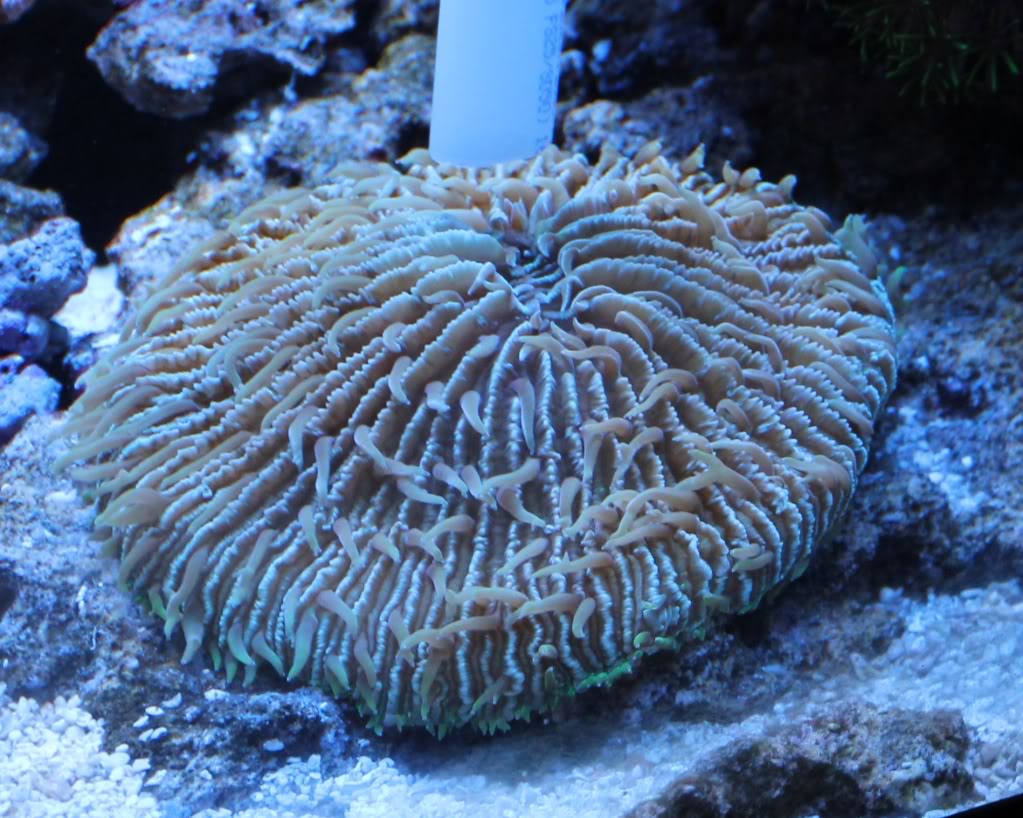
As it can take several minutes for the coral to take the food and swallow it, I will cover the coral with the top ½ of a plastic juice bottle. That way, the fish and/or CUC will be able to steal the food away from the coral while it is still eating
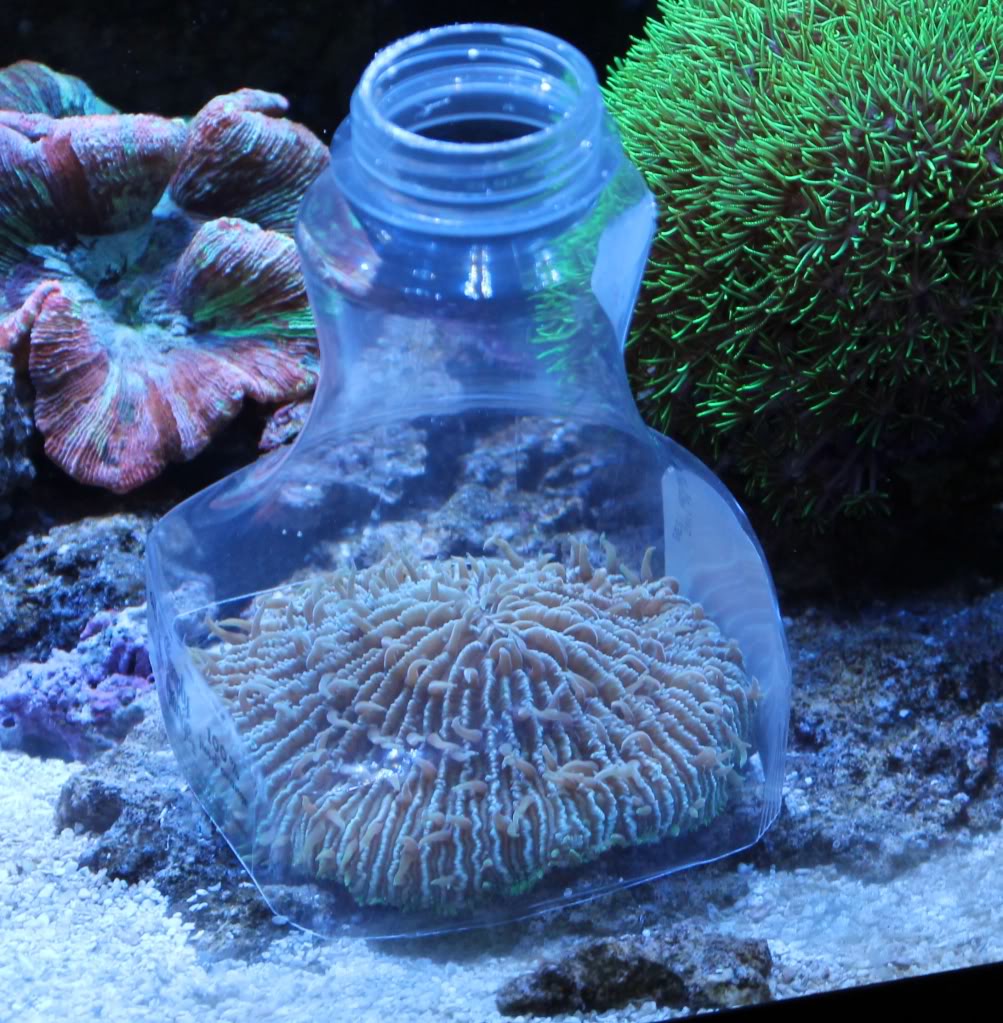
These are not the only methods you can use to feed corals. They are just my preferred methods that I have had a lot of success with.
Just as with fish, it is possible to over feed corals as well. You have to keep in mind, what goes in, must come out. Corals will not add a lot to the bioload of your tank, unless you over feed them. I would suggest small weekly feeding would most likely be beneficial to the corals without affecting anything else in your set-up.
If you have any questions about feeding corals, or any other questions about keeping marine aquariums, please feel free to post your question in our forum using the below link. If you are not already a member, it will only take seconds to join.
http://www.aquaticcommunity.com/aquariumforum/
Thank you your post was very helpful. We are brand new to the hobby. Our tank has been up for a little over a month, so we have not introduced corals yet. Your information has helped prepare us for when we do.
Glad you found it helpful